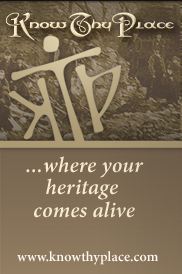We are delighted to announce that the National Museum of Ireland have decided to stock our Know Thy Place charts in their Museum Shop from this month. Now you will be able to buy County and Ireland charts while visiting some of the archaeological objects that inspired them! As professional archaeologists ourselves, it is great for the Know Thy Place team to have the quality of our work acknowledged, and we hope to continue to work with the Museum in the future! All our charts our still available from our website as well, which you can check out here.
We have issued a press release to mark the occasion:
Begin a Voyage of Discovery:
Uncover the story of Ireland and your ancestral home
with Know Thy Place at the National Museum of Ireland
Ireland has a long and glorious history. People first settled this wonderful land 9,000 years ago and have left their mark everywhere. If you’ve ever wondered what part your home place played in this wonderful story there’s good news, as visitors to the National Museum of Ireland can now explore their chosen county thanks to a unique heritage service called Know Thy Place.
The National Museum is delighted to introduce Know Thy Place’s ‘Ireland’ and ‘County’ charts, which will be available to purchase in the Museum shop from the end of March. Know Thy Place uses high quality archaeological research to provide an overview of the history and archaeology of Irish towns and regions from the earliest human settlers right up to modern times. The company’s archaeologists trawl through archives to track down every known monument in ‘thy place’ and the information is compiled into the story of your place from the earliest times, producing an end product of a beautifully illustrated wall chart which provides maps and information about the archaeology and history of the place.
Studying our past has come a long way in recent years, particularly with regard to Ireland and Irish heritage, and Know Thy Place is perfect for anyone who really wants to explore the archaeology of Ireland. Speaking about the charts now available at the National Museum, Colm Moloney, Director of Know Thy Place said “If you want a general overview of the archaeology of Ireland, our ‘Ireland’ chart explains the development of settlement on the island from earliest times through to the present day, featuring some of the most famous archaeological sites in Ireland as examples; while our ‘County’ charts are ideal if you have not yet identified your ancestor’s exact town land, as they look at each of the 32 counties in more detail.”
Commenting on their introduction to the National Museum, Colm said “This new partnership is a real coup our team at Know Thy Place, as one of Ireland’s major archaeological institutions has recognised the great appeal and accuracy of our charts, each of which is prepared for the general reader by a professional archaeologist. We are also currently exploring the potential for the production of a range of exclusive charts for the Museum, focusing on some of the major objects and exhibitions on display, and this could prove a very exciting project for all involved.”
Know Thy Place’s ‘Ireland’ and ‘County’ charts are available, and retail for €19.99 and €39.99 respectively, pre-rolled and packaged for ease of transport from the Kildare Street shop. If you want to find out more about these and other charts available visit www.knowthyplace.com.








































